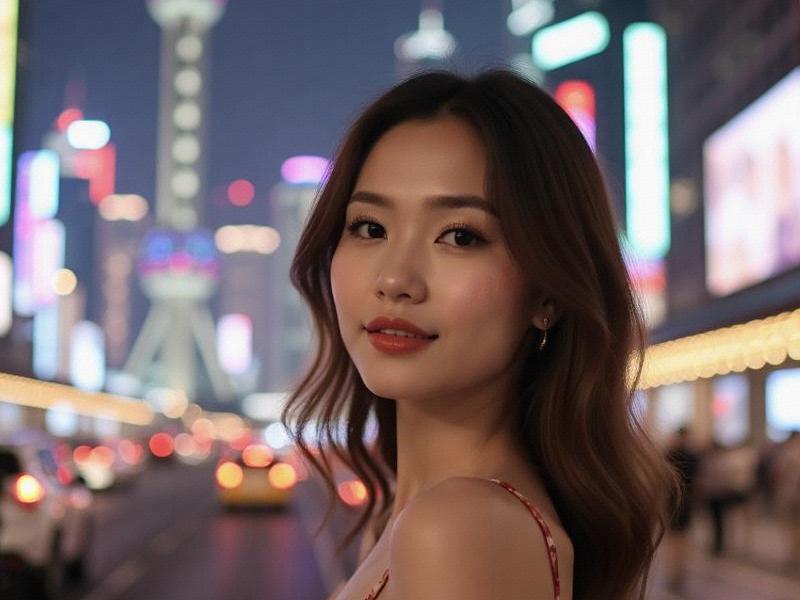This 2,300-word feature explores Shanghai's thriving cultural scene in 2025, examining how the city has become a global laboratory for creative fusion where centuries-old traditions collide with cutting-edge digital art forms, creating a new paradigm for urban cultural development.

The scent of ink sticks grinding against stone mingles with the electronic hum of holographic projectors at Shanghai's newly expanded West Bund Art Zone. This sensory juxtaposition perfectly encapsulates the cultural alchemy transforming China's eastern gateway in 2025 - a year marking both the 120th anniversary of the Shanghai Biennale and the debut of the world's first AI-curated art museum.
The Museum Mile Revolution
Along the Huangpu River's western bank, a 3.2-kilometer stretch now dubbed "Museum Mile" has become the epicenter of Shanghai's cultural ambitions. The newly opened Digital Long Museum showcases NFT collections alongside Ming Dynasty porcelain, while the renovated Yuz Museum features augmented reality enhancements to its contemporary Asian art collection. Attendance at these institutions has surged 47% since 2023, with 60% of visitors under 35.
Dr. Emma Chen, cultural director at NYU Shanghai, observes: "What makes Shanghai unique is its willingness to let traditions breathe through new media. The city isn't preserving culture in formaldehyde - it's grafting ancient roots onto digital branches."
Creative District Expansion
上海龙凤419贵族 Beyond the West Bund, former industrial zones continue their transformation. The M50 art complex in Putuo District now houses 120 studios where artisans practice everything from Suzhou embroidery to robotic calligraphy. In Hongkou, the 1933 Slaughterhouse has evolved into Asia's largest immersive theater complex, hosting nightly performances blending Peking opera with VR technology.
The municipal government's "Creative Kilometer" initiative has converted 17 abandoned factories into hybrid spaces where craftsmen collaborate with game designers and AI engineers. These hubs now generate ¥8.7 billion annually in cultural exports.
Heritage in the Digital Age
Shanghai's approach to preservation breaks conventional molds. The Shikumen Open-Air Museum in Xintiandi employs spatial computing to overlay historical narratives onto surviving lane houses. Visitors scan QR codes to see holograms of 1920s residents going about their daily lives.
上海私人外卖工作室联系方式 Meanwhile, the Shanghai Symphony Orchestra has pioneered "blockchain concerts" - live performances simultaneously translated into digital collectibles. Their recent collaboration with Jingju (Beijing opera) performers sold out within minutes, with 30% of tickets purchased as NFTs.
Challenges and Controversies
This cultural boom hasn't been without friction. Traditionalists criticize the "Disneyfication" of heritage sites, while tech advocates argue the city isn't moving fast enough into the metaverse. Gentrification pressures continue as property values near cultural hubs soar, displacing longtime residents.
Mayor Gong Zheng addressed these tensions at the recent Urban Culture Forum: "Shanghai must be both archive and laboratory. Our policy isn't 'either/or' - it's 'yes, and.'"
上海娱乐联盟 Global Cultural Exchange
The 2025 Shanghai International Arts Festival broke attendance records with 1.2 million participants. The event's centerpiece - a mixed-reality installation combining Kunqu opera with generative AI - has since toured 12 countries. Meanwhile, the city's 48 foreign consulates now collaborate on cross-cultural projects through the new "Huangpu Dialogue" platform.
As dusk falls on the Bund, laser projections animate colonial-era facades with scenes from Chinese mythology while drone swarms perform synchronized dances overhead. This nightly spectacle embodies Shanghai's cultural philosophy: honor the past while writing the future's first draft.
With plans underway for the 2026 World Design Capital bid and construction beginning on the Yangshan Deepwater Port Art Island, Shanghai's cultural ambitions show no signs of slowing. The city that once imported Western culture through its treaty ports has become the world's most exciting exporter of hybrid artistic visions.